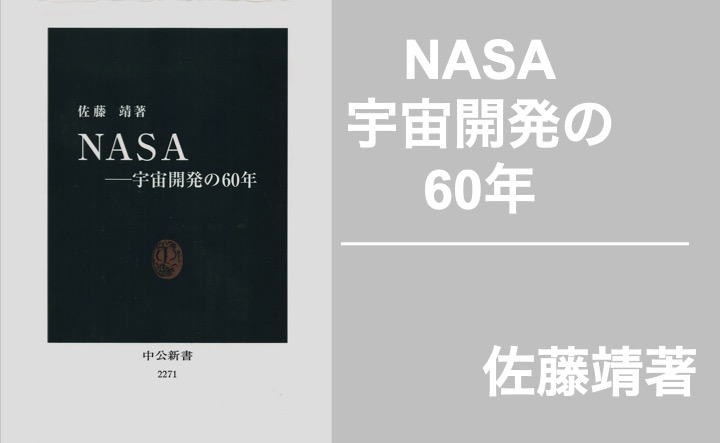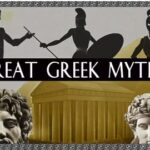1957年のソ連のスプートニク人工衛星の打ち上げ成功で宇宙開発技術に遅れを取った米国が、遅れを挽回すべくアイゼンハウアー大統領のもとで1958年に設立されたNASA(National Aeronautics and Space Administration)の以後60年に渡る歴史をまとめる。米国の宇宙戦略、それに伴う周辺技術の拡大、予算を握る議会との良好な関係、各省庁との連携協調、優秀な人材の確保、そして組織としてのチームワークの形成など、多面的にまとめている。遅れを取り返すために様々な試行錯誤が行われる。
NASAの組織の運営で興味を引いた点は、長官が対外的に強い人材で、議会対策や関連機関の調整などに注力するのに対し、副長官はNASA内部組織に強い人を起用している点である。ちょうど、米国企業でCEOが株主、顧客などの社外とのやり取りをし、社内はCOOが統括する姿と重なって見える。
第二次大戦後ドイツから引き抜いたロケット技術者にフォン・ブラウンが含まれるが、彼は大戦中ドイツでV-2ロケットを3200機発射しており、米国でもロケット開発に大きく貢献する。(原爆開発のときのアインシュタインやオッペンハイマーと同じように、優秀な人材はなんとしてでも確保する姿勢である)
初代長官グレナンは「長期的視野で技術能力を高め、秩序ある宇宙開発計画を実行する」ことを念頭に置いてNASAはスタートを切った。1960年にApollo計画として、月に人間を送り込む計画が作成され、当時の大統領Kennedyがこれを協力に推進した。そのための準備は、ロケットの開発にシステム工学を持ち込み、米空軍や国防総省の知見を加えて推進された。いくつかの重大事故も起こっている。1969年7月、Apollo11号による目標達成。しかし重大事故も起こっており1967年の3名の飛行士の火災による焼死などがあるが、原因究明を徹底することで、技術の進歩を図る動きとつなげている。
Apollo計画は17号で終了する。しかも議会や世論はNASAに巨額の予算を使うことに難色を示す。スペースシャトルを目玉として宇宙開発を推進する。米国単独ではなく、欧州との協力体勢に持ち込む。しかし1986年チャレンジャー号は爆発7名の宇宙飛行士が死亡。原因解明と組織の立て直しで対応する。1998年からは国際宇宙ステーション組み立てへと変身してゆく。2003年、宇宙から帰還するコロンビア号も大気圏突入後空中分解し7名の宇宙飛行士が犠牲になった。(この原因解明には、組織的な安全保証プロセスの欠落も指摘されて、改善した)
この有人飛行と同時に、無人惑星探査も実施され、1977年に打ち上げられたヴォイジャー1,2号は木星や土星の鮮明な画像を捉え、多くの情報を提供している。
1993年にはガリレオ計画が実施され、木星の惑星の新発見や詳細なデータ提供が行われた。土星探索では1997年にカッシーニ計画が実施された。
スペースシャトルを用いたハッブル望遠鏡での宇宙探索も、新しい宇宙誕生の鮮明な画像を提供している。NASAは新規に獲得したデータをもとに、宇宙の誕生、地球外生命の探索など、精力的に情報を収集している。
この本で、カバーされる範囲から現在はElon Musk率いるSpace-XやJeff BezosのBlue Originが、ロケットの商用利用や火星へ人を送り込む事業を展開する。
宇宙開発も、NASAの功績の上に更に進展しようとしている。
先駆者の歩んだ道をたどるのは重要である。特に失敗を次のスッテップに活かすかは、ますます重要になっている。人生100年時代のマナビの観点からすると、60年という人生で起こる転機をどのように次に繋げるかを示唆する学びの多い著作である。






八木さん、非常に興味深い情報ありがとうございます。先日、妻とHoustonのNASAを訪問し、いろいろ見てきました。館内のバスツアーにも参加し、アポロ計画の司令塔で使われた建物にも入って、指令センターも見学してきました。
アメリカの宇宙計画は、八木さんのおっしゃる通り、失敗の歴史。多くの尊い命も犠牲になりました。でも、その失敗から「何を学ぶか?」ということが大切であると思います。自分は、サンフランシスコでMBAを取得しましたが、その授業の中で、1986年のチャレンジャー事故について、Harvard Business Schoolのケーススタディに収められている題材をもとに、勉強したことを思い出しました。
そのケーススタディでは、NASAにおける学者間の意思疎通に原因があったと教えられました。・・・と言いますのは、学者というのは、とかく、自分の研究題材について、同僚との競争意識のため、情報を公開したがらず、そのコミュニケーション不足がチャレンジャーの不具合に至ったと結論付けているのです。そして、この問題を解決するためには、どうすればよいのか?それがMBAの授業での課題でした。結論は、人事制度です。NASAは、その後、職員が重大な事故にいたるような情報を隠すような振る舞いは、人事査定のマイナス要素にし、積極的に自分の知っていることを情報公開することを奨励するように人事制度を改定して、問題の解決を図るように仕向けたとのことでした。この授業は、たしか、Teamwork論みたいな科目であったと記憶していますが、こうした「失敗から学ぶこと」が大切なのだと思います。
大東亜戦争(太平洋戦争・Pacific war)のミッドウェー海戦で負けた事実を、日本軍がきちんと失敗から学べれば、この戦争は早く終戦に至っていたでしょうし、多くの尊い命を失わずに済んだのだと思います。アメリカに住んでいて思いますが、事実を事実として捉えること、これは、本当に大切なことだと思います。「臭いものにふたをしてはいけません」
今、山本七平さんの「空気の研究」を読んでいます。こちらの解説記事もお願いいたします!
関さん、コメントありがとうございます。
コメントいただくと、私達も学べるのでうれしいです。
結論は「愚直に学ぶことしか無い」のですね。
日本は、すぐ有頂天になって学ぶことを忘れて、世界から置いてゆかれる連続ですね。
学ぶ人が増えることを切に願っています。
「空気の研究」も取り上げましょう。
八木さん、コメントありがとうございます。そうです!愚直に学ぶこと=現場から情報を得る!ことだと思います。
追記です。上記投稿でお話しした時の自分のレポートが、自分のPCに残っていたので、シェアします。結局、Knowledge Databaseを構築するという結論になっていますが、それが人事制度と絡んでいるということです。皆さんの参考になればと思います。
MEMORUNDOM
Date: February 24, 2010
To: Professor Judy Lee
From: Ryotaro Seki #0556144 (Golden Gate University in San Francisco, California)
Subject: Managing Knowledge and Learning at NASA and JPL
Analysis of the current situation:
There have been two aspects of the knowledge management problem at NASA, according to this case. One is its culture of privatizing knowledge that causes a lack of information-sharing among scientists and engineers to achieve projects or funding. The other is an imperfect knowledge database built on Information Technology (IT) that has become complicated due to enormity of information it needed.
It is costly and risky to change a company’s culture and its IT system because in this case, the proposal of changing culture was projected to cost $5.85 million, and building a new IT system would cost $2–$4 million. Thus, to implement both of these changes effectively, these projects should be done simultaneously.
On the other hand, Goldin’s attempt, “Faster, Better, Cheaper,” made its implementations of projects cheaper in NASA, but it caused many failures of projects due to a lack of funding. Hence, NASA should focus on the correct ways to improve the knowledge management with a sufficient budget.
Recommendation
To solve these problems precisely and effectively, NASA should consider both of them together, as mentioned above, in accordance with the SECI model (Nonaka, 2007). The SECI method would enable NASA to reduce the costs of improving its database and changing its company culture because of its effectiveness.
SECI provides mainly four processes to manage knowledge, — Socialization, Externalization, Combination and Internalization. It suggests that tacit knowledge seniors have learned from many cases changes to explicit knowledge youths can understand. Although this concept seems to be a cultural approach, it is possible to improve a knowledge database that is based on IT by putting explicit knowledge transmitted by SECI into the IT system the NASA will build. The following is an outline of implementation.
1. Socialization
To let youth understand seniors’ tacit knowledge, both youths and seniors work together to transmit the senior’s knowledge to youths.
2. Externalization (Articulation)
When young employees can get the tacit knowledge from seniors, they should translate it into explicit knowledge by documenting and schematizing it. Then they should put it into the new database.
3. Combination
After all youths put the explicit knowledge into the database, the other team puts it together into the categorized and aligned database. It then should become a consolidated database.
4. Internalization
Finally, all employees can own the tacit knowledge from the database mentioned above.
In addition, so it does not make a similar mistake in the future, NASA should adopt additional employee evaluation methods including the obligation that all employees have to put their knowledge into the database when they complete their missions.
Therefore, using the SECI model and adopting the new evaluation method should make NASA able manage tacit knowledge effectively.
A Reference
Nonaka, I. (2007). The Knowledge-Creating Company. Harvard Business Review; Jul/Aug2007, Vol. 85 Issue 7/8, p162-171, 9p, 2 illustrations.
SECIモデルについても、共有しておきます。
http://www.osamuhasegawa.com/seci%E3%83%A2%E3%83%87%E3%83%AB/